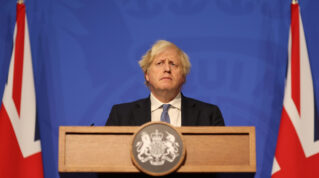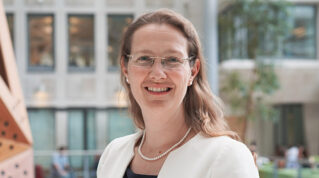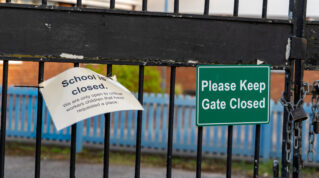The proportion of school support staff absent from work with a confirmed case of Covid has more than doubled in just three weeks, while teacher and leader absence is up by 80 per cent.
The Department for Education’s latest attendance survey data, published today, estimates that one in 25 staff members were off last week with Covid.
Four per cent of teachers and school leaders – over 20,000 – and 3.9 per cent of teaching assistants and other staff – over 27,000 – were off with a confirmed case on January 6.
This is up from 2.2 per cent of teachers and leaders and 1.5 per cent of other staff on December 16, increases of 81 per cent and 160 per cent respectively.
Paul Whiteman, general secretary of the NAHT school leaders’ union, said staff absence on the first days of term had been “significant”.
“Schools are doing a brilliant job to keep things going in the face of very challenging circumstances, but it is very far from business as usual. And the concern is that the situation could worsen over the coming weeks.”
Overall absence was at 8.6 per cent among teachers and leaders and 8.9 per cent of other staff on January 6, though this includes those absent for reasons other than Covid.
Covid-related absence, including staff off with a suspected case or who have been told to isolate, was at 4.9 per cent among teachers and leaders and 5 per cent of teaching assistants and other staff, up from 3 per cent and 2.3 per cent respectively.
However, the proportion of staff off for other reasons decreased from 5 per cent to 3.7 per cent for teachers and leaders and from 5 per cent to 3.9 per cent among other staff.
It comes after the education secretary Nadhim Zahawi warned staff absences were likely to rise as the impact of the Omicron variant is felt in schools.
Geoff Barton, leader of the ASCL leadership union, said “any hope” the Christmas holidays would act as a firebreak for schools “have evaporated”.
“The challenges posed by having so many staff absent will continue to put schools and colleges under severe pressure.”
43% more pupils off with confirmed Covid case
However, the increase in Covid-related pupil absences since mid-December is less pronounced, though there has been a large rise in the number off with a confirmed case.
On January 6, 315,000 pupils (3.9 per cent) were absent for Covid-related reasons on January 6, up from 301,000 (3.7 per cent) on December 16.
Of those absent for Covid-related reasons on January 6, 159,000 were off with a confirmed case of Covid, up 43 per cent on the 111,000 absences for this reason recorded on December 16.
A total of 102,000 pupils were off with a suspected case of Covid, down from 107,000 on December 16. Only 7,000 were absent due to attendance restrictions to manage an outbreak or “exceptional circumstances related to Covid”, down from 36,000 on December 16.
However, there was a large rise in the number of pupils required to stay at home and isolate – from 8,000 in mid-December to 21,000 on January 6.
Covid absence highest in London before Christmas
The DfE has also published a regional breakdown of attendance at the end of last term. It shows that pupil Covid-related absence was highest in London at 5.1 per cent, more than double the rate of 2.4 per cent seen the previous week.
The north east and Yorkshire and the Humber had the lowest Covid absence rates of 2.6 per cent, up from 2 per cent and 2.4 per cent respectively the week before.
Local authority-level data also shows a huge variation between council areas, with many London boroughs among those faring the worst.
On December 16, 1.4 per cent of primary pupils were absent due to Covid in Sunderland, compared to 11.8 per cent in Harrow, north London.
At secondary level, absence rates ranged from 0.9 per cent in Kirklees to 13.4 per cent in Hillingdon.
Education staff among those most likely to report long Covid
Today’s statistics on workforce absence comes after the Office for National Statistics reported that the education sector had seen the biggest month-by-month increase in the proportion of people reporting that they were suffering the effects of long Covid.
Along with health and social care, teaching and education had the greatest prevalence of reports of long Covid. Women, those aged 35 to 69 and those living in more deprived areas were also more likely to report issues.
Today is the first time the government has published attendance data since mid-December, following its decision in the summer to move the releases fortnightly.
During a hearing of the Parliamentary education committee this morning, children’s commissioner Dame Rachel de Souza said she was pressing the government to provide “live” attendance data.
“We need to see the attendance data now. We need to be able to look – I don’t see why, it’s only a limit of our current management information systems – that we can’t look and see who is in school now.
“At the moment we can only see the percentage of kids who weren’t in school, we don’t know if they’re the same ones as yesterday or today. So I really want to see our data systems upgraded and just those basic things would give us a help.”
The government has also revealed today that so far 1.72 million devices have been delivered or dispatched to children to aid with remote learning, with 369,819 of those sent out since the end of October 2021.















Your thoughts